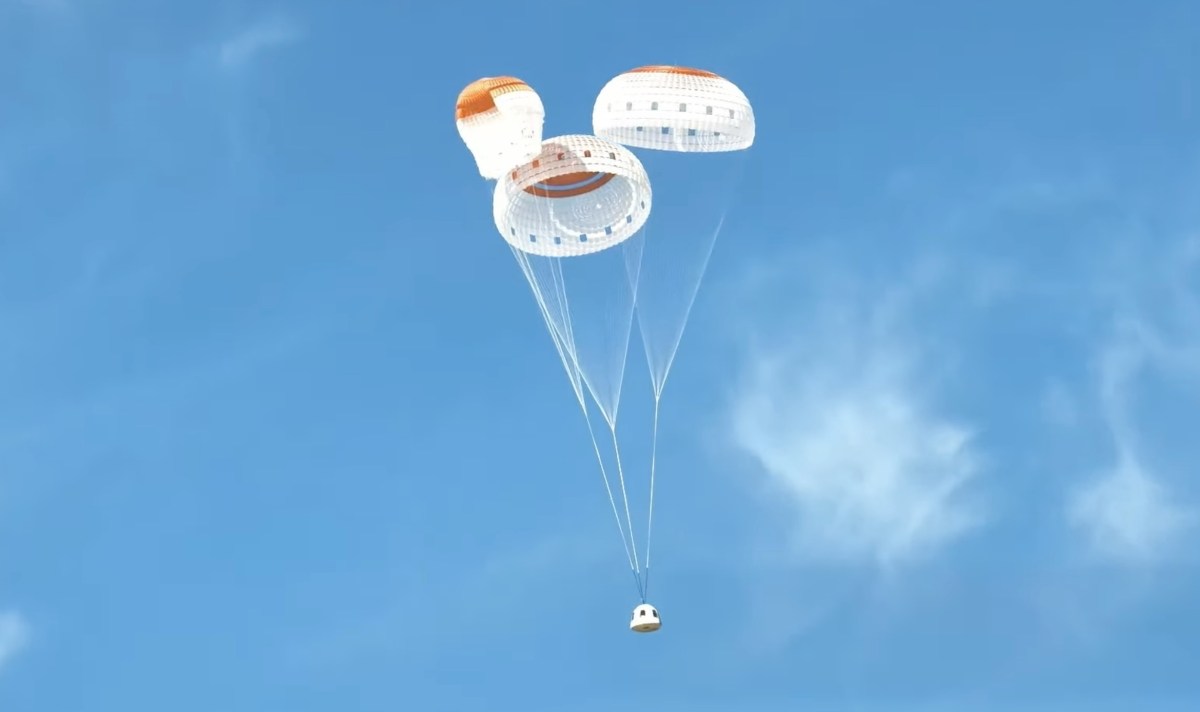Updated 2:40 p.m. Eastern with Blue Origin statement.MOUNTAIN VIEW, Calif. — Blue Origin launched its New Shepard suborbital vehicle Feb. 4 on the company’s first attempt to simulate lunar gravity in flight.New Shepard lifted off from Blue Origin’s Launch Site One in West Texas at 11 a.m. Eastern. The vehicle flew to a peak altitude of 105 kilometers above sea level, with the capsule landing 10 minutes and 6 seconds after liftoff, about two and a half minutes after the booster performed a powered landing.The NS-29 mission was scheduled to launch a week earlier, but the company scrubbed the launch after an extended countdown hold, blaming both weather conditions and a technical issue. The company said on the webcast of this launch attempt said that the previous scrub was caused by an avionics issue that kept the vehicle from verifying commands.The payload-only flight differed from previous New Shepard launches by spinning the capsule after it separated from the booster. The capsule’s reaction control thrusters were commanded to spin the capsule at 11 revolutions per minute, simulating lunar gravity conditions inside the capsule.Commentators on Blue Origin’s launch webcast stated that the capsule did spin up as planned. In a statement a few hours after the flight, Blue Origin said the capsule did create lunar gravity conditions for the payload inside for about two minutes.“New Shepard’s ability to provide a lunar gravity environment is an extremely unique and valuable capability as researchers set their sights on a return to the Moon,” said Phil Joyce, senior vice president for New Shepard at Blue Origin, said in the statement. “This enables researchers to test lunar technologies at a fraction of the cost, rapidly iterate, and test again in a significantly compressed timeframe.” The capsule carried 29 payloads, 17 of which were provided by NASA through its Flight Opportunities program, which supported development of the lunar gravity capability for New Shepard. The payloads were in six broad categories: in-situ resource utilization, dust mitigation, advanced habitation systems, sensors and instrumentation, small spacecraft technologies, and entry, descent and landing. One additional payload was mounted on the exterior of the booster to expose it to space conditions.Blue Origin had discussed offering this capability for several years, reaching an agreement with the Flight Opportunities program nearly four years ago to develop and demonstrate it. “This is an entirely new way to bring lunar gravity to NASA and other lunar technology providers, accelerating their research and tech readiness at a much lower cost,” Dave Limp, chief executive of Blue Origin, said in a social media post last month.During the capsule’s descent, one of three parachutes did not initially inflate after deployment. The capsule has the ability to land with only two parachutes, which happened on another New Shepard flight in May 2024.Webcast commentators said the company was testing a new parachute design but did not discuss the changes made to them. The third parachute did fully inflate shortly before landing.
By Tyler Mitchell
Tyler is a renowned journalist with years of experience covering a wide range of topics including politics, entertainment, and technology. His insightful analysis and compelling storytelling have made him a trusted source for breaking news and expert commentary.
